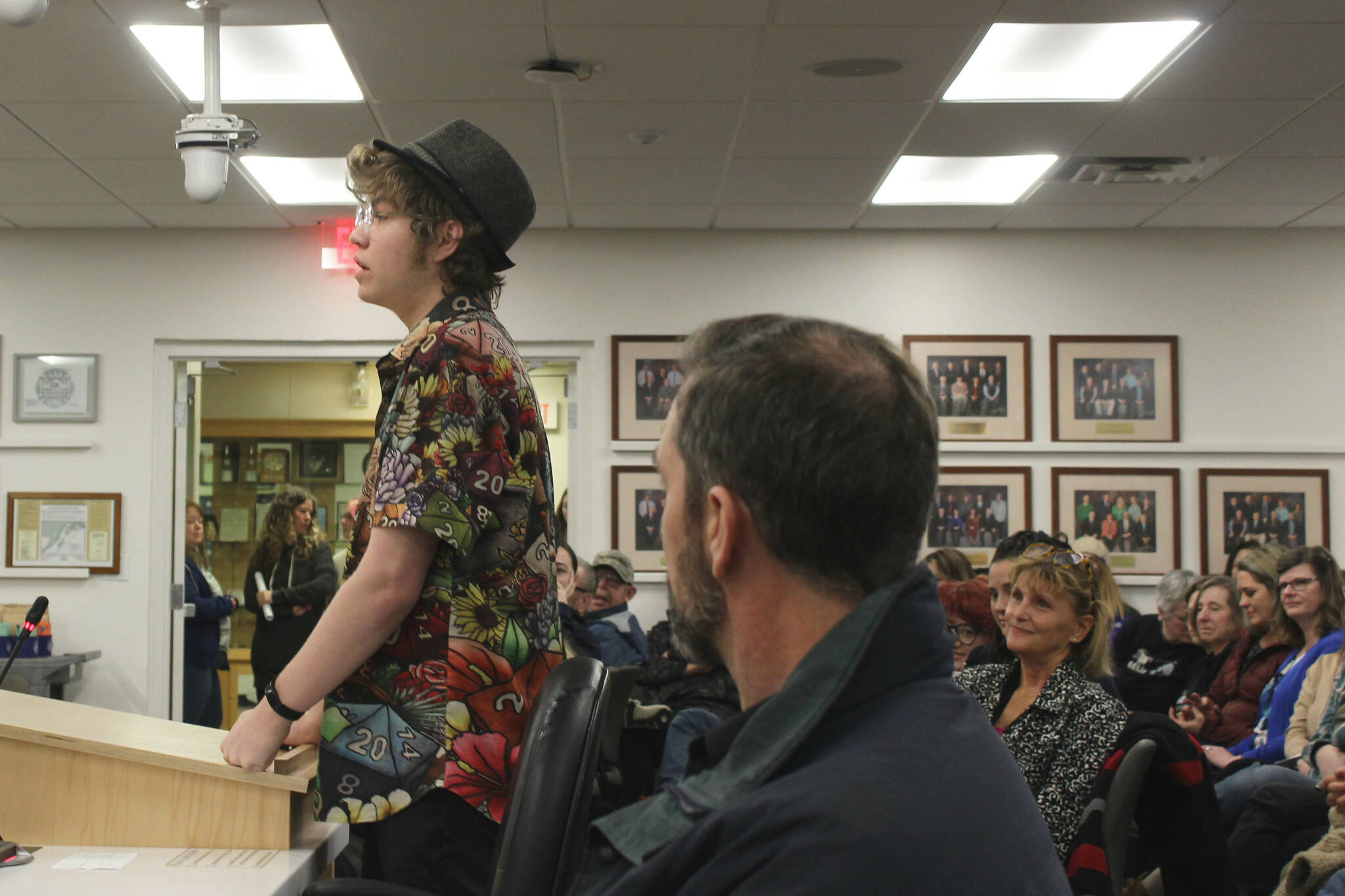As the Kenai Peninsula Borough School District prepares to grapple with another $13 million deficit for the upcoming budget cycle, members of the school board are looking to educate themselves and the public about what’s at stake if they’re forced to make cuts.
Members of the school board’s Finance Committee convened Tuesday for a “Budget Deep Dive,” during which KPBSD Finance Director Elizabeth Hayes presented the amount of general fund money the district spends on extracurricular activities, pools and theaters.
Board of Education President Zen Kelly, who also chairs the Finance Committee, said at the beginning of Tuesday’s meeting that the list provided to committee members was not a list of proposed cuts, but rather as an informational item intended to help new board members and the general public understand how much is spent on different activities.
“This is not something that we’re bringing forward to say, ‘Hey, this is what we’re looking to cut,’” Kelly said. “This is merely informational.”
Nearly all of the items on the Tuesday list, however, were among the cuts made by the board during the last budget cycle, such as the elimination of pool and theater staff, as well as extracurricular travel funds.
Hayes said the largest expenditure budgeted in the district’s general fund is for stipends and associated benefits — the district spent about $1.13 million in the current fiscal year on 515 stipends for sports coaches and other academic and intramural activities. That’s in addition to roughly $251,000 the district pays for salaries and benefits for athletic directors.
The district also spends about $685,000 on salaries and benefits for pool manages at Susan B. English School in Seldovia, Skyview Middle School, Ninilchik School, Kenai Central High School, Homer High School, Seward High School and Soldotna High School. Between $165,000 and $202,000 is spent on pool utilities districtwide.
District expenses also on the list prepared for committee members Tuesday are about $621,000 for theater technicians on the central peninsula, at Homer High School and at Seward High School. The cost of supplying extracurricular travel, safety equipment like football helmets and hockey ice is about $185,000.
School board members during last year’s budget cycle faced widespread pushback from communities around the peninsula who opposed cuts to school pools and theaters, but ultimately moved ahead with the reductions to help balance the district budget. The district was able to bring those cuts back after receiving one-time funding from the State of Alaska.
The district was also able to offset last year’s deficit — also about $13 million — with roughly $6.4 million in remaining federal COVID-19 relief funding and about $822,000 in savings. KPBSD has already warned, though, that it doesn’t have any more COVID relief money, and is therefore facing a more significant deficit for the next fiscal year.
KPBSD joined school districts around Alaska during the Alaska Legislature’s last regular session in lobbying for an increase to the amount of money the state gives districts per student, also called the base student allocation. Lawmakers failed to adopt an increase to that amount, but rather approved one-time funding that was ultimately slashed in half by Gov. Mike Dunleavy.
The district has said it plans to again call on lawmakers during the upcoming session to increase and inflation-proof the base student allocation.
KPBSD Superintendent Clayton Holland told committee members at the end of Tuesday’s meeting that while the budget items reviewed reflect a large chunk of expenditures, the overall impact on the deficit the district is facing is minimal.
“This is a big chunk we’re looking at today, but it’s really a drop in the bucket compared to where we need to go,” Holland said.
Tuesday’s meeting of the school board’s finance committee meeting will be available to stream on KPBSD’s BoardDocs website at go.boarddocs.com/ak/kpbsd/Board.nsf/Public.
Reach reporter Ashlyn O’Hara at ashlyn.ohara@peninsulaclarion.com.

